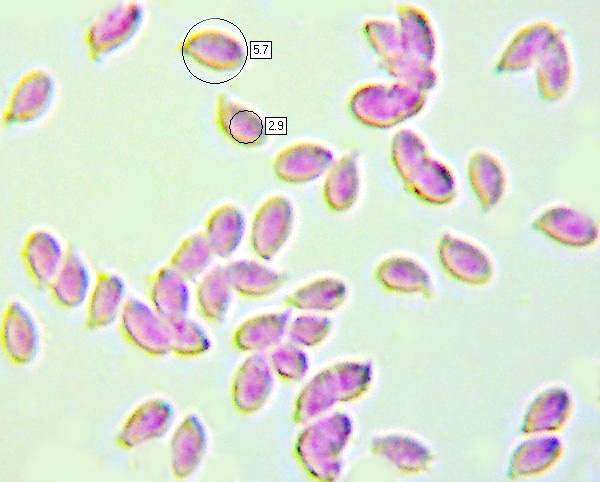Gymnopus dryophilus (Bull.) Murrill - Russet Toughshank
Phylum: Basidiomycota - Class: Agaricomycetes - Order: Agaricales - Family: Marasmiaceae
Distribution - Taxonomic History - Etymology - Identification - Culinary Notes - Reference Sources
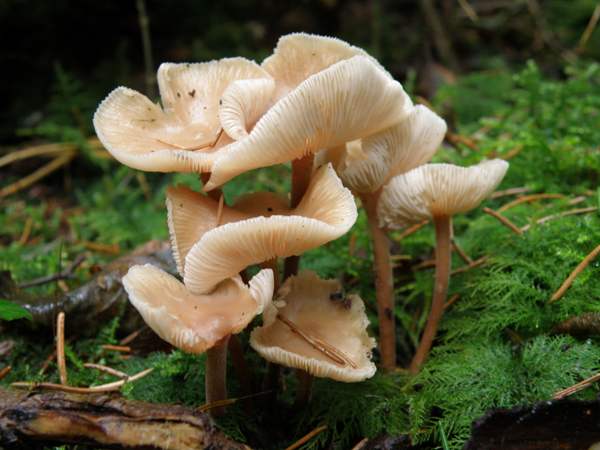
Russet Toughshanks occur in both deciduous broadleaf woods and conifer plantations, but most commonly they are found in woodland or parkland settings under oak trees.
Distribution
Very common and widespread throughout Britain and Ireland, the Russet Toughshank also occurs in most temperate countries on mainland Europe and in Asia. This species is also found in many parts of North America.
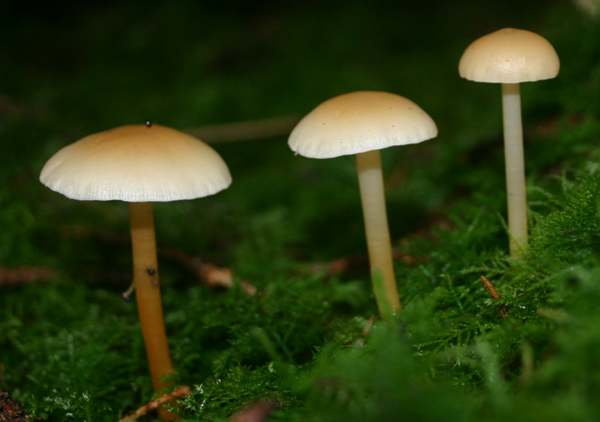
Taxonomic history
The Russet Toughshank was described in 1790 by French mycologist Jean Baptiste Francois Pierre Bulliard, who gave it the scientific name Agaricus dryophilus. 31 years Later Paul Kummer renamed it Collybia dryophila, by which name it was widely known until very recently.The currently-accepted scientific name dates from 1916, when American William Alphonso Murrill proposed the transfer of this species to the genus Gymnopus, whereupon its name became Gymnopus dryophilus.
Synonyms of Gymnopus dryophilus include Agaricus dryophilus Bull., Omphalia dryophila (Bull.) Gray, Collybia dryophila(Bull.) P. Kumm., Collybia dryophila var. aurata Quél., Marasmius dryophilus (Bull.) P. Karst., Collybia dryophila var. alvearis Cooke, Marasmius dryophilus var. auratus (Quél.) Rea, and Collybia dryophila var. oedipoides Singer.
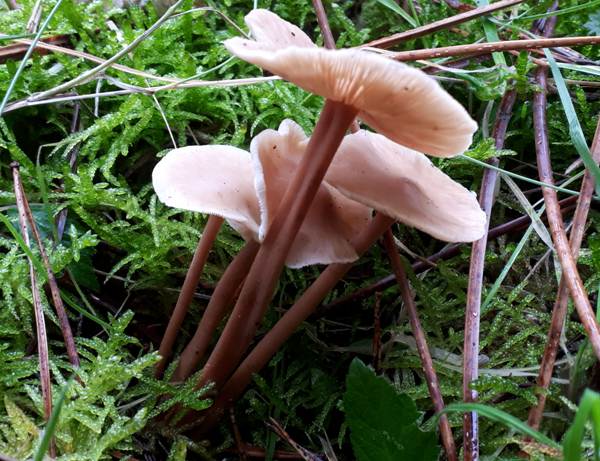
Etymology
Gymnopus, the generic name, comes from Gymn- meaning naked or bare, and -pus meaning foot (or, in the case of a mushroom, stem). The specific epithet dryophilus comes from Greek and means 'lover of oak leaves', which seems appropriate because this mushroom is found most often growing in leaf litter beneath oak trees.
Identification guide
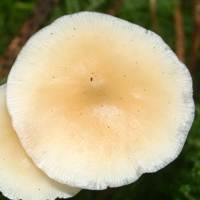 |
Cap2 to 5cm across; convex, flattening often with a wavy margin; pale buff to light tan, paler at the margin. |
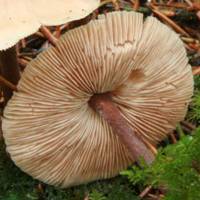 |
GillsAdnexed or free; very light beige or pale buff. Stem2 to 5cm long and 2 to 5mm diameter; tough and fibrous; surface silky; swollen towards base; tan, gradually becoming darker towards base, which is covered in pale bristly hairs; no stem ring. |
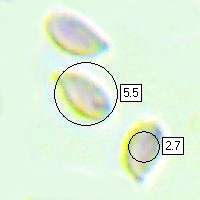 |
SporesEllipsoidal, smooth, 5-6.5 x 2.5-3.5µm; inamyloid. Show larger imageSpore printWhite. |
Odour/taste |
Not distinctive. |
Habitat & Ecological role |
Saprobic, in all kinds of woodland but most commonly under oaks. |
Season |
June to October in Britain and Ireland. |
Similar species |
Several other less common 'toughshanks' have pale tan-to-buff caps including the Redleg Toughshank, Gymnopus erythropus (syn: Collybia erythropus). |
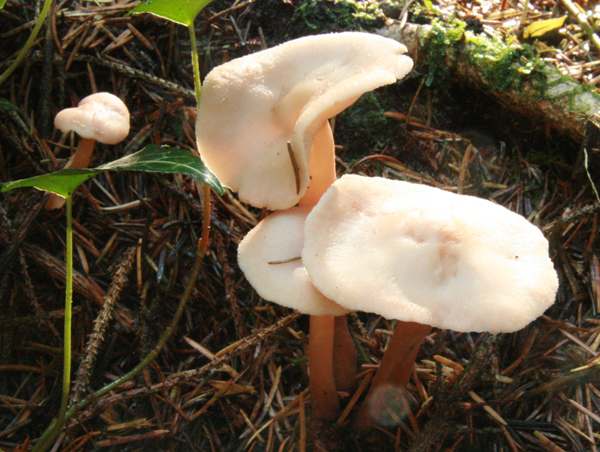
Culinary Notes
Gymnopus dryophilus is recorded as 'edible but not worthwhile' in some field guides, but in any case the cap flesh is very thin and insubstantial while the stems are definitely too tough to be tempting. Russet Toughshanks are therefore not worth considering as a culinary collectible.
Reference Sources
Fascinated by Fungi, 2nd Edition, Pat O'Reilly 2016, reprinted by Coch-y-bonddu Books in 2022.
Dictionary of the Fungi; Paul M. Kirk, Paul F. Cannon, David W. Minter and J. A. Stalpers; CABI, 2008
Taxonomic history and synonym information on these pages is drawn from many sources but in particular from the British Mycological Society's GB Checklist of Fungi.
Fascinated by Fungi. Back by popular demand, Pat O'Reilly's best-selling 450-page hardback book is available now. The latest second edition was republished with a sparkling new cover design in September 2022 by Coch-y-Bonddu Books. Full details and copies are available from the publisher's online bookshop...
